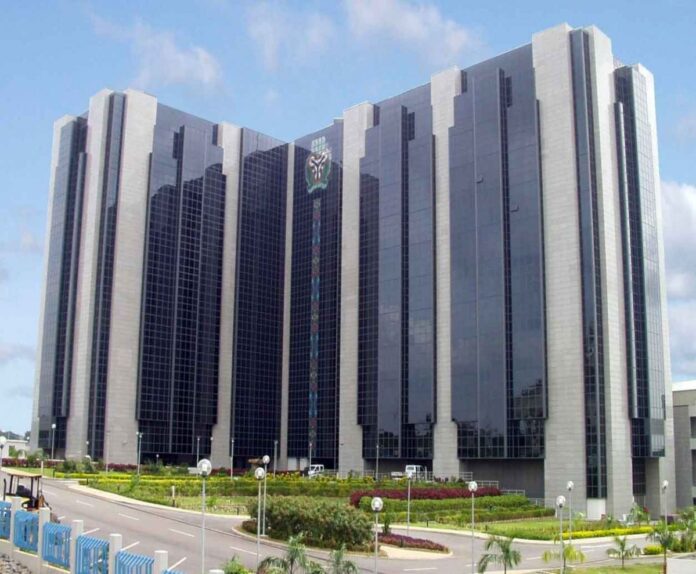Naira’s troubles will be significantly tackled when the Central Bank of Nigeria (CBN)-led Monetary Policy Committee (MPC) meets later this month, domestic and international watchers have predicted.
The MPC meeting, slated for Monday, February 26 and Tuesday, February 27, 2024 will among other things discuss way out of the inflation spike, exchange rate depreciation and injection of credit into key segments of the economy, are expected to top the meeting agenda.
Expected at next month’s meeting are members of the Committee of Governors led by CBN Governor, Olayemi Cardoso; Deputy Governor, Corporate Services Directorate, Dr. Bala M. Bello; Deputy Governor, Economic Policy Directorate, Mr. Muhammad Sani Abdullahi; Deputy Governor, Financial System Stability Directorate, Mr. Philip Ikeazor and Deputy Governor, Operations Directorate, Ms. Emem Usoro. An economist and Managing Director, Financial Derivatives Company Limited, Bismarck Rewane, said all eyes are on the MPC to raise rates for naira’s correction.
He said: “The solution to the naira’s FX throes begins at the first MPC meeting since July 2023, scheduled for February 26-27. We expect a hawkish CBN, likely raising effective interest rates by 200 basis points to narrow the negative real rates of return, instill confidence and bring the FX markets to a correction,” said.
Rewane said the prevailing concern reverberating across the Nigerian economy is the downward spiral of the exchange rate.
According to him, weakened naira will result in imported inflation and erode the purchasing power of consumers.
He explained that over the course of 10 days, the currency shed 10.78 per cent of its value against the dollar before appreciating to N1,440/$ (parallel market) on February 2.
But through a sequence of circulars and a change in the methodology for computing FX rates, the CBN has reinstated its commitment to encouraging transparency with market reflective rates, reducing forex demand pressures, lifting restrictions on international transactions and improving dollar liquidity.
Rewane said that despite gradual rebound of the naira, the markets still show signs of disequilibrium and unanchored exchange rate expectations.
The CBN removed the cap on the allowable limit of -2.5 percent to +2.5 percent around the previous day’s closing rate for the International Money Transfer Operators (IMTOs). This adjustment signifies a shift in the regulatory framework, providing IMTOs with more flexibility in determining exchange rates.
Head of Macro Strategy at Asset Management firm, FIM Partners, Charlie Robertson, said the new methodology could help Nigeria attract more investment as it essentially abolishes the multiple exchange rates that frustrated investors. “It could take months but there could be more dollars swirling around in Nigeria now that the currency is officially very cheap,” Robertson said.
Robertson warned that forex backlog would have to be resolved and short term interest rates needed to rise significantly to attract portfolio investors.
Also, the FMDQ Group, which calculates the country’s official exchange rate, announced on Friday that it was revising its methodology to “address recent fluctuations and challenges encountered” in Nigeria’s highly volatile foreign exchange market, where the official exchange rate often trailed parallel market values. The publication of exchange rates was suspended that day.
The revised exchange rate system, which FMDQ began publishing last week, will ensure that “rates accurately reflect market conditions while upholding price formation and transparency”, the firm said.
The MPC met four times last year, skipping two meetings, but still met the statutory requirements in the CBN Act.
At the MPC’s last meeting in July, the Committee raised the Monetary Policy Rate (MPR) from 18.5 per cent to 18.75 per cent; adjust the asymmetric corridor to +100/-300 basis points around the interest rate; retain the Cash Reserve Ratio at 32.5 per cent; and liquidity ratio at 30 per cent.
According to the CBN Act 2007, to facilitate the attainment of the objective of price stability and to support the economic policy of the Federal Government, there shall be a Committee of the CBN known as the Monetary Policy Committee (MPC).
The MPC consists of the Governor of the Bank who shall be the Chairman; the four Deputy Governors of the Bank; two members of the Board of Directors of the Bank; three members appointed by the President and two members appointed by the Governor and the MPC shall have responsibility within the Bank for formulating monetary and credit policy.
“The appointment of a member of the MPC pursuant to Sub-section 2 (d) and (e) of this section, the remuneration, filling of temporary vacancies, qualification, tenure of office and disqualification shall be subject to the same terms as are stipulated for a Director under sections 10 and 11 of this Act,” it said.
It added that the Governor shall preside at every meeting of the Board and in his absence, a Deputy Governor designated by him, shall preside at such meeting.
The Act also stipulates that five members of the Board, three of whom shall be Directors other than the Governor or the Deputy Governors, shall form a quorum at any meeting.
“Unless otherwise provided in this Act, decisions shall be by a simple majority of the votes of the members present, but in case of any equality of votes, the person presiding shall have a casting vote. There shall be for the Board a Secretary who shall be appointed by the Board and be responsible to the Board through the Governor,” it said.
According to the Act, the Secretary shall be responsible for convening, on the authority of the Chairman, meetings of the Board recording the minutes of all meetings of the Board and such other meetings as the Board may direct and acting as Secretary to any Committee of the Board; maintaining and keeping minute books and a register of the Directors of the Bank and keeping in safe custody the common seal of the bank.



